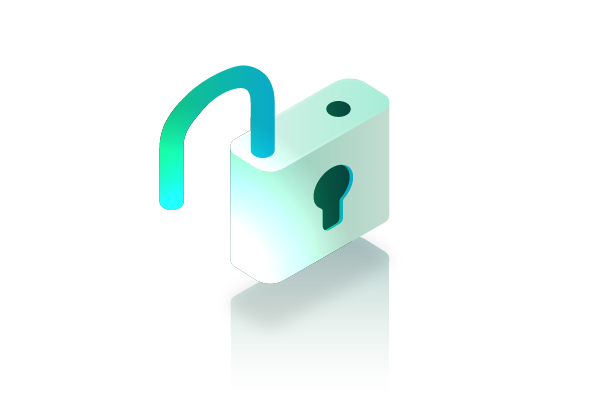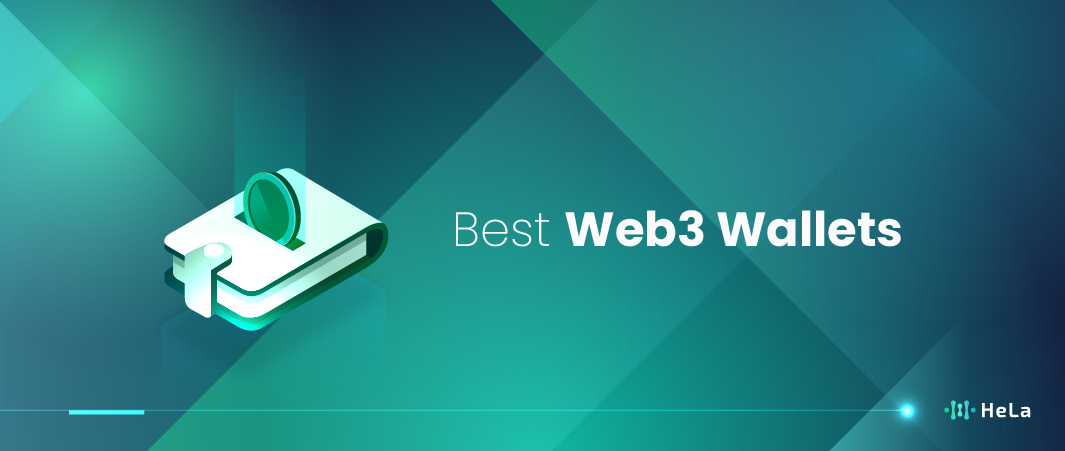In the dynamic world of digital assets, the choice of a Web3 wallet is crucial for both seasoned investors and newcomers. As we venture into 2024, the landscape of cryptocurrency and blockchain technologies continues to evolve, making the need for a reliable, secure, and user-friendly Web3 wallet more pronounced than ever. This comprehensive guide aims to illuminate the path to selecting the best Web3 wallet, tailored to meet your digital asset management needs.
The term ‘Web3 wallet’ refers to a blockchain-enabled wallet, offering users the capability to interact with decentralized applications (dApps) and manage a variety of digital assets and cryptocurrencies. Unlike traditional wallets, a Web3 wallet gives you full control over your assets, emphasizing the ethos of decentralization and self-sovereignty.
Choosing the right Web3 wallet goes beyond merely a storage solution; it’s about finding a gateway to the vast opportunities in the decentralized web. In this detailed exploration, we will delve into the essential features, security measures, and user experience considerations that you should look for in a Web3 wallet. We will also examine some of the top contenders in the market today.
What is Web3 Wallets?
Grasping the intricacies of Web3 wallets is pivotal for anyone looking to navigate the complex landscape of blockchain technology. These digital wallets transcend the basic functionality of storing cryptocurrency, serving as multifaceted tools that facilitate a myriad of interactions within the decentralized web. With a Web3 wallet, users can execute smart contracts, which are self-executing contractual states stored on the blockchain, with the terms directly written into code. These wallets also provide a seamless gateway to decentralized finance (DeFi) platforms, an emerging financial technology that operates independently of traditional centralized institutions.
Also Read: 10 Top Blockchain Development Companies to Know in 2024
Moreover, Web3 wallets are instrumental in managing digital identities and assets, enabling users to maintain control over their personal data and transactions. They offer enhanced security features and empower users with full custody over their assets, a significant departure from the norms of traditional financial systems. By leveraging blockchain technology, Web3 wallets ensure transparency, immutability, and resistance to censorship, thereby fostering a trustless environment where transactions and interactions can occur directly between parties without the need for intermediaries.
In essence, a Web3 wallet is not just a tool but a foundational component of the decentralized web. It is a portal to the myriad possibilities that blockchain technology brings, including but not limited to financial services, supply chain management, and digital content ownership. As the blockchain landscape continues to evolve, understanding and utilizing Web3 wallets will become increasingly crucial for individuals and organizations aiming to leverage the full potential of this transformative technology.
10+ Best Web3 Wallets to Consider in 2024

The landscape of digital asset management is continuously evolving, and as we step into 2024, the realm of Web3 wallets is no exception. Here’s a curated list of some of the best Web3 wallets to consider for the year 2024:
1. Gem Wallet
Gem Wallet is a user-friendly crypto wallet that offers convenience and top-notch security for beginners. It is the best wallet for DeFi, built on iOS and Android, allowing you to send, receive, trade, and buy crypto assets like TON Coin, Ethereum, Solana, Base, USDT, SUI, BSC, and many more.
Key Features:
- Multi-Chain Wallet: Supports Ethereum, Binance Smart Chain, Polygon, Avalanche, Solana, and more with a simple UX for easy navigation and transactions.
- Security: Gem Wallet prioritizes the safety of your funds. It employs advanced encryption protocols and follows best practices to ensure that your digital assets are protected against unauthorized access.
- Self-Custody Wallet: Users have exclusive ownership of private keys, retaining full control over their assets.
- Open Source: Transparent and auditable codebase with community collaboration.
- Fiat On/Off Ramp: Facilitates the conversion between fiat and cryptocurrencies.
- Swaps: Supports swapping of major cryptocurrencies with a user-friendly interface.
- Staking: Earn rewards by staking assets directly within the wallet.
- WalletConnect: Enables secure communication with decentralized applications (dApps).
- Naming: Utilizes decentralized naming systems for human-readable addresses.
2. Paybis Wallet
- Non-Custodial with extensive NFT and multi-chain support.
- Known for its straightforward and intuitive design, ensuring ease of use.
- Advanced security with MPC technology, offering top-tier security without fully storing the private key.
- Compatible with Android, iOS, and browsers.
3. Coinbase Wallet
- Non-Custodial wallet offering access to thousands of tokens and DApps.
- Notable for seamless access to decentralized finance (DeFi) and a broad spectrum of NFT interactions.
- Supports multi-chain operations and offers a high degree of user autonomy.
- Compatible with Android, iOS, and browser extensions.
4. Wirex Wallet
- Offers comprehensive crypto and fiat versatility.
- Non-Custodial with MPC technology and extensive support for DeFi and NFT.
- Compatible with various blockchain networks including popular ones like Bitcoin and Avalanche.
- Compatible with Android and iOS.
5. Exodus Wallet
- Known for its user-friendly interface and sleek design across web, desktop, and smartphone platforms.
- Offers staking opportunities for some coins but has a limited amount of coins supported.
- Compatible only with the Trezor hardware wallet.
6. Trust Wallet
- Developed by the team at Binance, emphasizing security and user-friendliness.
- Offers staking for some coins and provides a secure environment for a vast array of cryptocurrencies.
- Compatible only with smartphones.
7. Phantom Wallet
- Non-Custodial wallet with complete user control and autonomy over assets.
- Offers NFT grouping by similarity, token swaps, and compatibility with Ledger Nano X for offline storage.
- Seamlessly integrates with numerous dApps.
- Compatible with Android and iOS.
8. MyEther Wallet
- An open-source, non-custodial wallet focused on Ethereum and its assets.
- Supports interactions with smart contracts and dApps.
- Offers a versatile set of features, especially for transactions connected to Ethereum.
- Compatible with Android, iOS, and as a Chrome extension (Enkrypt).
9. Torus Wallet
- Renowned for its simplicity and user-friendliness, making it ideal for beginners.
- An open-source, non-custodial key management system.
- Supports transactions on Ethereum, Polygon, Reef, and xDai Chains.
- Available only in English.
10. MetaMask
- A non-custodial wallet, giving users control over their private keys.
- Known for its ease of buying ERC-20 tokens directly within the app.
- Primarily supports Ethereum and other ETH-based tokens.
11. Binance Web3 Wallet
- Integrated within the Binance app, this self-custody cryptocurrency wallet is tailored for the DeFi landscape.
- Employs Multi-Party Computation (MPC) technology for added security and autonomy.
- Offers a digital portal to a wide array of dApps and blockchain-based applications.
12. Ledger Wallet
- A hardware wallet that prioritizes security by isolating private keys in a secure chip.
- Transactions require manual authentication, providing an extra layer of security.
- Not as convenient for quick transactions due to the requirement of physical connection for operations.
These wallets have been recognized for their robust security measures, user-friendly interfaces, and comprehensive support for a wide range of digital assets and blockchain networks. It’s essential to assess your individual needs and preferences while navigating through the options to select the most suitable Web3 wallet for your digital journey in 2024.
Security Features of Top Web3 Wallets

When diving deep into the security features of top Web3 wallets, it’s essential to understand the layers of protection that safeguard digital assets from unauthorized access and potential vulnerabilities. Let’s break down these features in detail:
Private Key Management
- Importance: The private key is the most crucial element in cryptocurrency security, acting as the ultimate password. If someone else accesses it, they can control your assets.
- Best Practices: Secure wallets encrypt private keys and store them in isolated, often hardware-based, environments. They ensure that the user, and only the user, has access to their keys. Features like seed phrases for key recovery are also critical, allowing users to regenerate their keys if lost.
Multi-Factor Authentication (MFA)
- Necessity: MFA drastically reduces the chances of unauthorized access because it requires multiple forms of verification, significantly reducing the risk of being compromised by a single point of failure.
- Implementation: This involves a combination of something you know (password or PIN), something you have (a mobile device or hardware token), and something you are (biometric data). MFA should be mandatory for actions like transactions or changing sensitive account details.
Regular Security Updates and Audits:
- Continuous Updates: Wallet software must be regularly updated to address new threats. Patches and updates close vulnerabilities that hackers might exploit.
- External Audits: Regular, thorough audits by third-party security experts can identify and rectify vulnerabilities, reinforcing the wallet’s defense mechanisms against evolving threats.
Smart Contract Security:
- Contract Vulnerabilities: As wallets interact with smart contracts, they become exposed to the contract’s security. Flaws in contract code can lead to massive losses.
- Verification and Audits: Ensuring that all smart contracts have undergone rigorous security audits by reputable firms minimizes the risk of losing funds due to code vulnerabilities.
Phishing Protection:
- Threat of Phishing: Phishing is a common method used by attackers to trick users into revealing sensitive information. Wallets are frequent targets.
- Active Measures: Wallets should actively warn users of potential phishing threats and integrate with anti-phishing services. Educating users about recognizing and avoiding phishing attempts is also vital.
Session Management:
- Risk of Idle Sessions: Sessions that stay open or exhibit abnormal behavior pose a security risk, potentially allowing unauthorized access.
- Proactive Measures: Implementing automatic logouts after periods of inactivity and monitoring for unusual activity patterns can prevent potential security breaches. Users should be promptly alerted of any suspicious activities.
Insurance and Recovery Options
- Unforeseen Circumstances: Despite all precautions, things can go wrong, from technical failures to security breaches.
- Safety Nets: Providing insurance can compensate users for certain types of losses. Equally important are robust recovery options, such as backup phrases or dedicated recovery services, ensuring that users can regain access to their assets even in adverse situations.
A wallet incorporating these security measures offers a comprehensive shield against a multitude of threats. Users are advised to not only rely on these features but also stay informed and cautious, practicing good security hygiene to protect their digital assets in the dynamic landscape of Web3 technologies.
Ease of Use and Accessibility in Web3 Wallet

Ease of use and accessibility are crucial for the widespread adoption of Web3 wallets. These platforms must balance sophisticated features with a straightforward user interface to cater to both tech-savvy individuals and those new to digital assets. This balance ensures that users can manage their digital assets efficiently, without feeling overwhelmed by the complexity of the underlying technology.
The best Web3 wallets excel by offering intuitive navigation, robust security measures, and comprehensive support. They simplify complex processes and provide clear, understandable guidance. This approach not only aids in asset management but also educates users, fostering confidence and promoting the broader adoption of Web3 technologies.
In examining these wallets, we focus on their user interface design, security protocols, and the inclusion of educational resources. These elements are key to understanding how these wallets not only serve as tools for managing digital assets but also as gateways that encourage the exploration and adoption of Web3 by a diverse user base.
Compatibility and Integration
In the dynamic ecosystem of blockchain and cryptocurrencies, the importance of a Web3 wallet’s compatibility and integration capabilities cannot be overstated. As the digital landscape evolves, users seek solutions that not only secure their assets but also offer seamless interaction across various platforms. This section delves into the critical role of a Web3 wallet’s compatibility, highlighting its significance in ensuring a smooth user experience in the multifaceted world of digital currencies.
A versatile Web3 wallet stands as a pivotal tool in the user’s arsenal, offering the flexibility to navigate through different blockchain networks with ease. Such a wallet opens doors to a multitude of opportunities, enabling users to engage in diverse transactions, explore decentralized applications (dApps), and participate in the broader spectrum of the digital economy. Here are some key points to consider:
- Seamless Integration: A Web3 wallet that seamlessly integrates with a wide array of platforms and services enhances the user’s ability to interact with the digital economy, making it a cornerstone for engagement in various blockchain-based activities.
- Support for Multiple Cryptocurrencies: The capacity to support a diverse range of cryptocurrencies is not just a convenience but a necessity. It empowers users to manage their digital assets efficiently, catering to the dynamic nature of their investment and transaction needs.
Also Read: 12 Best Cryptocurrency Wallets to Know in 2024
- User Experience: At the heart of compatibility lies the user experience. A wallet that provides a cohesive and intuitive interface, while ensuring secure and efficient transactions, significantly elevates the overall experience of interacting with the digital world.
- Future-Proofing: In an ever-evolving industry, a Web3 wallet that emphasizes compatibility and integration positions itself as a future-proof solution. It adapts to emerging trends, technologies, and user requirements, ensuring longevity and relevance in the blockchain space.
By prioritizing compatibility and integration, a Web3 wallet transcends being a mere tool for asset management; it becomes an essential gateway to the vast possibilities of the blockchain universe, aligning with the diverse needs and aspirations of its users.
Conclusion
Selecting the best Web3 wallet is a personalized journey that depends on your specific needs, preferences, and the level of engagement with the decentralized web. In our conclusion, we will recap the key points to consider and offer guidance on making an informed decision that aligns with your digital asset management goals.
In this exploration, we have traversed the essential terrain of Web3 wallets, shedding light on the pivotal features, security measures, and user experience considerations. As the digital asset landscape continues to evolve, the significance of choosing the right Web3 wallet becomes increasingly evident. By prioritizing security, ease of use, compatibility, and community support, you can embark on your Web3 journey with confidence, armed with a wallet that not only safeguards your assets but also opens doors to the endless possibilities of the decentralized web.
Remember, the best Web3 wallet for you is one that resonates with your personal and financial aspirations in the digital age. As you move forward, keep abreast of the latest developments and continue to engage with the community. Your proactive approach will ensure that your journey into the world of Web3 is not only secure but also enriching and full of potential.
Disclaimer: The information provided by HeLa Labs in this article is intended for general informational purposes and does not reflect the company’s opinion. It is not intended as investment advice or recommendations. Readers are strongly advised to conduct their own thorough research and consult with a qualified financial advisor before making any financial decisions.

Joshua Soriano
I am Joshua Soriano, a passionate writer and devoted layer 1 and crypto enthusiast. Armed with a profound grasp of cryptocurrencies, blockchain technology, and layer 1 solutions, I've carved a niche for myself in the crypto community.
-
Joshua Soriano#molongui-disabled-link
-
Joshua Soriano#molongui-disabled-link
-
Joshua Soriano#molongui-disabled-link
-
Joshua Soriano#molongui-disabled-link

